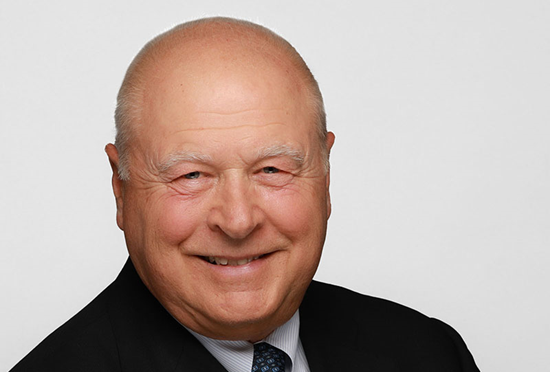Funds embrace Target2-Securities

PARTICIPANTS
- Alan Cameron, head of relationship management – international banks and brokers, BNP Paribas Securities Services
- Ulf Noren, specialist and global head of sub-custody, transaction banking, SEB
- Jason Nabi, head of global broker-dealer services, Societe Generale Securities Services
- Tim Harris, associate director, alternatives and derivatives, Hermes Fund Managers
- Hugo Cox, chairman
Cox (chair): What good news do we have to celebrate over the past year?
Alan Cameron: Most players in the industry are in a much better situation than this time last year. Transaction volumes are up and so are asset valuations. We can only do well in our industry if our clients are doing well and, by and large, they are doing better than they were last year. Most funds are really embracing Target2-Securities (T2-S) and looking at it to see how they can maximise the advantages, with some good progress on corporate action standards.
Ulf Noren: There has been some levelling in the value chain of the industry, for example with the central securities depository (CSD) environment. There is also a stronger tendency towards collaboration in the industry. One example is the T+2 effort.
Another is progress around transparency, with the association of global custodians and the world forum of CSDs, together with Iosco, working very thoroughly on cooperation. The dialogue between the industry and regulators has also improved quite a lot.
On the negative side, to counter Alan, although we see a massive increase in asset values in markets it has not really materialised into a lot more transaction volume, which I find disappointing. I am also concerned at the general macro development on the interest rate side.
Chair: How is regulation affecting how the sell side organises businesses? Are costs increasing? 
Noren: We see increases in the cost of capital, definitely. And for regulatory compliance we have to put in place many more controls than we previously had to – with certain IT investments becoming more or less mandatory. This is not necessarily making the world a better place for individual client relationships.
There is administrative burden, not least in the reporting field. You have infrastructures changing core systems, in order to try to survive in a changing world. In just our little corner of the world, five out of seven CSDs are changing their core IT infrastructures. That is extremely costly. I think we have now reached the level where most post-trade providers are not sustainable in the long run and the traditional 300 basis point transaction fee model has to go. 
Cameron: We have passed through a period where we have had a lot of lobbying and drafting
In the UK, of course, we have the new rules on the protection of client assets. I see that as part of a continuum that has been gradually tightened up over the years – the new rules are very clear and straightforward, and I think we all have to pay proper attention to them. They demand a higher level of segregation and reconciliation and a higher level of reporting.
Jason Nabi: Regulation can be split three ways – those that impact how transactions are processed, those that impact how transactions and investments are reported and those that impact how transactions or investments are financed. In the first case, certainly Mifid and the AIFM directive have driven us all to a degree of re-engineering or reassignment of some processing in certain sectors and locations – such as moving a process from Dublin to the UK.
However, fundamentally it is the Capital Requirements Directive (CRD4), and its wider implications, that is actually the game-stopper. You can outsource functions, administration or processing relatively easily, whether you are on the buy side or the sell side. But it is a lot harder to insource capital or to access capital and capital support. If you do not have capital, you have got a big problem.
I think we will see significant adjustments in the way the sell side operates and the number of players it comprises. We are already seeing firms change ownership, prime brokers downsize and larger investment banks downsize the scale of their business. That is, fundamentally, going to continue to change the landscape of the industry going forward. 
Jason Nabi, Societe Generale Securities Services and Tim Harris, Hermes Fund Managers (right)
Chair: What is the view of the buy side?
Tim Harris: Dodd-Frank kind of came and went very fast. We had it on the radar as a big warning sign for many months but went as fast as it came for us. The European Market Infrastructure Regulation (Emir) has been our biggest challenge and it will continue to be so for the next month as we hit the August deadlines for evaluation and collateral.
We still have a big focus on reporting for the AIFM directive. Most of our service providers are able to help us with this – some are able to provide 100% servicing and others are somewhere in the middle. We were fairly early adopters for AFIM reporting. I think we are due to start reporting in July for one of our funds, and for another set of funds for September or October.
We are early across the line, in terms of what we have to do, but we are looking to a point where we entirely outsource this or come up with a combination model, combining information from other sources with information we are reporting ourselves. Here the choice is partly between high-cost outsourcing and lower cost, but with more headaches, do-it-yourself solutions.
Under Emir we have favoured self-reporting over delegated reporting. That has stood us quite well for the next wave of collateral reporting coming through, as we have the data stored in-house so we can actually meet those requirements fairly fast.
Found this useful?
Take a complimentary trial of the FOW Marketing Intelligence Platform – the comprehensive source of news and analysis across the buy- and sell- side.
Gain access to:
- A single source of in-depth news, insight and analysis across Asset Management, Securities Finance, Custody, Fund Services and Derivatives
- Our interactive database, optimized to enable you to summarise data and build graphs outlining market activity
- Exclusive whitepapers, supplements and industry analysis curated and published by Futures & Options World
- Breaking news, daily and weekly alerts on the markets most relevant to you




